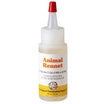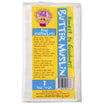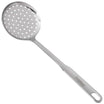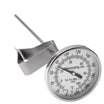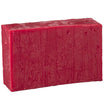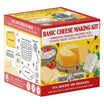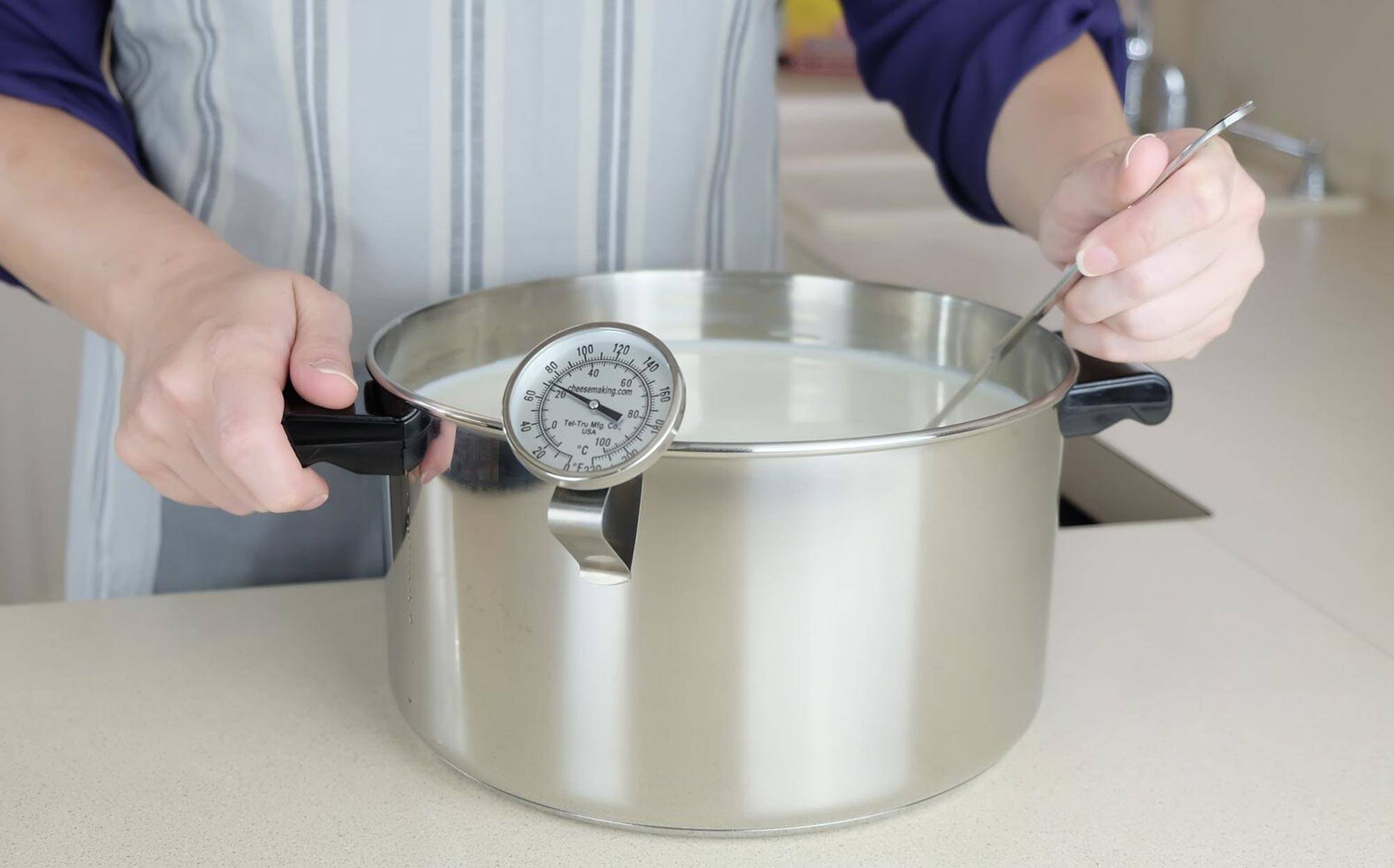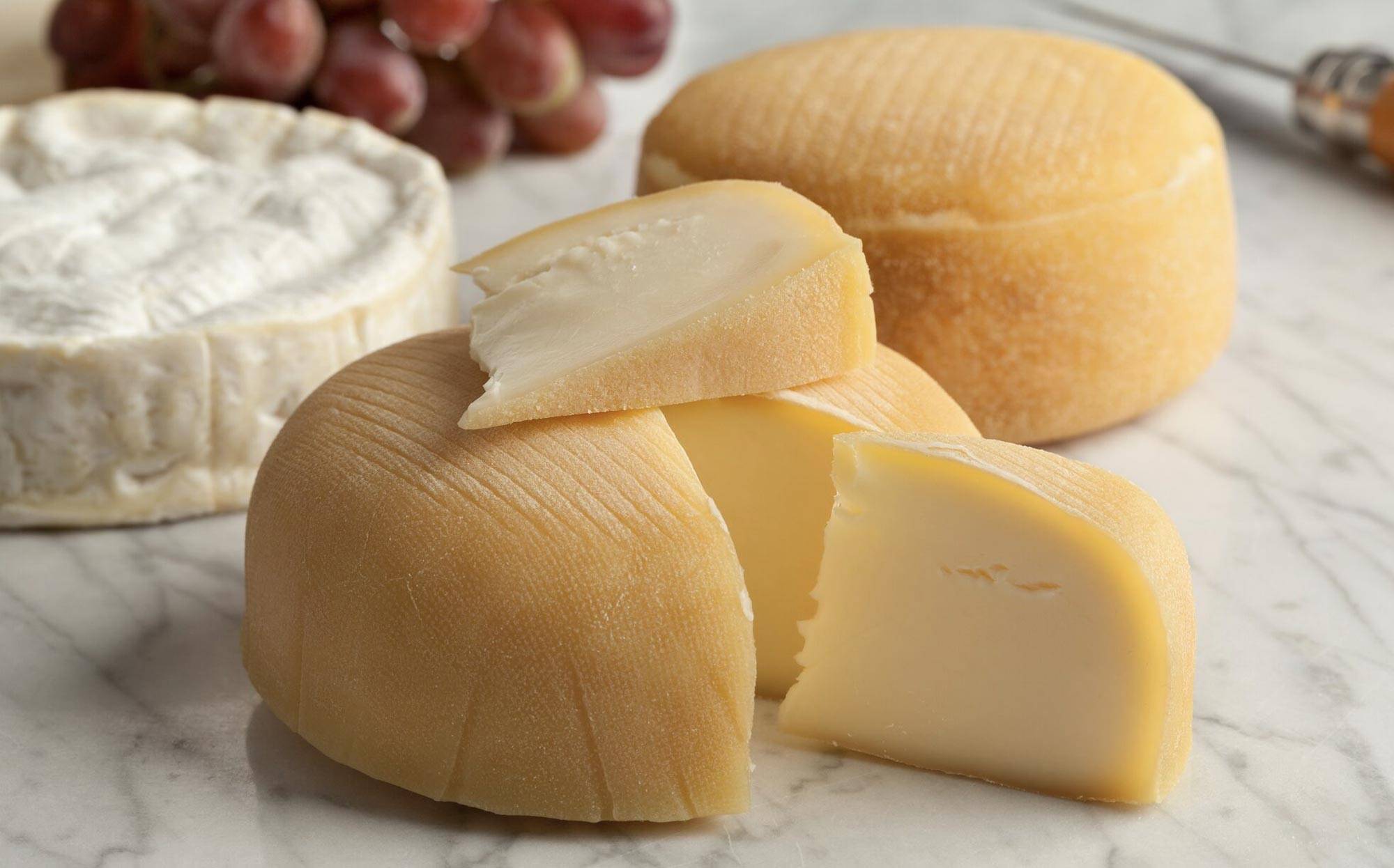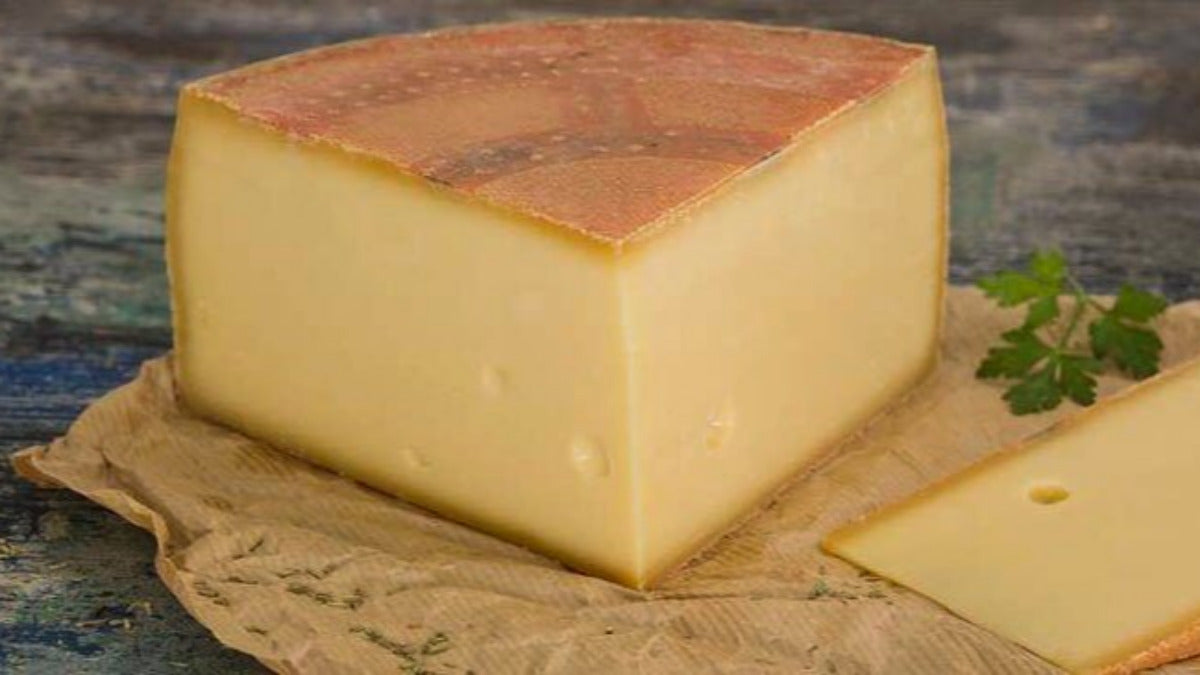
Appenzeller Cheese Making Recipe
Appenzeller is a fantastic cheese that has been made for over 700 years in the mountains of Switzerland. While aging, a unique treatment is applied, the rind is rubbed with a "secret" blend of yeast, alcohol, and a combination of 25 different herbs, roots, leaves, petals, seeds, and bark.
-
Yield
4 Pounds
-
Aging Time
~4 Months
-
Skill Level
Advanced
-
Author
Jim Wallace

Ingredients
Total price for selected items: Total price:
Instructions
A Recipe for Appenzeller Style Cheese
This cheese is for those that have a few cheeses already made, and want to explore the development of a very unique natural rind.
I might suggest an advanced beginner willing to learn from doing, but likely most suitable for someone working at an intermediate level.
For the guideline below, I will offer the details for a 4 gallon batch, because I feel that a larger cheese will tend to ripen and show more character from the special washing and aging.
If you wish to make a smaller 2 gallon size just reduce the ingredients proportionate to the milk.
The guideline pictures below show a double batch I made because this cheese disappears too fast otherwise.
-

Heat & Acidify Milk
Begin by heating the milk to 90F (32C). You do this by placing the milk in a pot or sink of very warm water. If you do this in a pot on the stove make sure you heat the milk slowly and stir it well as it heats
Once the milk is at 90F the culture can be added.
Here I detail (don't get scared, it's pretty simple) several options you have and some background on why:
A primary Thermophilus culture that can survive a higher cooking temperature needs to be added.
A secondary culture needs to be added to work in tandem with the Thermophilic culture:
- Helveticus culture is a word referring to the mountains and is likely the original secondary that was found on the farms.
- Bulgaricus culture is a reference to the mountains of eastern Europe and most associated with Yogurt but it is now commonly used in the Alps.
For culture additions you can choose from:
- Yogurt-Y1 This is the combo of Thermophilus and Bulgaricus. It is my favorite because I usually have the culture made up as the house yogurt. It needs to be made up as yogurt before using, and I use about 1/2% of Yogurt to milk volume (~2.5ozs) for the raw milk I use here. You may find that you need to use up to 1-1.25% if using pasteurized milk.
- ThermoB This is similar to the above Y1, but comes as a direct set. Amounts used will vary from 1/4-1/2tsp. depending on milk used, with raw milk needing less.
- C201 This is our small pack Thermo culture, and contains the Thermophilus plus Helveticus culture. 1 pack for raw milk, 1.5-2 packs for pasteurized milk.
- TA061 This is the large pack Thermo culture containing only the Thermophilus culture. Amount used will vary from 1/4-1/2tsp. depending on milk used, with raw milk needing less. It would be my last choice because it is not as complex as the others. If you do have a pack of our LH100 (Helveticus), you can add about 1/8-1/4tsp of this as well to complete the inoculation.
Hopefully I haven't scared everyone off with the details above, but this can add to your culture decisions down the road as well.
These may seem to be lighter culture additions, and they are, because this style of cheese gets a slower acid development. Typical of most Alpine cheeses, they do not want a rapid and high acid development. By nature, they are all sweeter cheeses.
To prevent the powder from caking and sinking in clumps sprinkle the powder over the surface of the milk and then allow about 2 minutes for the powder to re-hydrate before stirring it in.
The milk now needs to be kept at this target temperature until it is time to increase for cooking the curds. Hold the milk with culture quiet for the next 90 minutes to allow the culture to begin doing its work.
If using the Yogurt, it is already alive and active (like a mother culture) and needs less time.
30-45 minutes of ripening time should be sufficient if using Yogurt.
It will be very slow initially, but will soon kick into its more rapid rate of converting lactose to lactic acid.While you are waiting for the curd to ripen, make sure your molds and drain cloth are ready for the finished cheese.
-


Coagulate with Rennet
For raw milk, add about 1.75ml of single strength liquid rennet. For pasteurized, add about 2.5ml.
The milk now needs to sit quiet for 45 minutes while the culture works and the rennet coagulates the curd.
You should notice the milk beginning to thicken at about 15 minutes, but wait the full 45 minutes before testing the firmness and cutting.
The thermal mass of this milk should keep it warm during this period. It is OK if the temp drops a couple degrees during this time.
-



Cut Curd & Release Whey
Once you have determined the curd firmness to be good, you can begin cutting. Begin the cut with large 3"" spaced vertical cuts, and then again vertical cuts at right angles. Wait 2-3 minutes. for the curd to heal these cuts. You will see some whey rising in the cuts.
Next, cut the entire mass SLOWLY to pea to hazelnut size curds, taking 20-30 minutes to do this.
Allow the fresh cut curds to rest and heal again for about 5 minutes.
-



Cook Curds
Next begin a SLOW cook to 108F over the next one hour.
When the initial cook temp is reached, the curd then needs to be kept at 108F to cook to its final dryness, another 15-30 minutes. This is where you control the final moisture before pressing.
Up to this point the curd has reduced its moisture to the desired degree. This should be a curd that comes together when consolidated in the hand. Experience and good note taking should help with this when evaluating the final cheese.
-


Remove Whey
The curds can now be allowed to settle to the bottom of the vat for gathering.
Once the curds have settled, remove the whey down to about 1 inch above the curd mass.
Gather the curd mass, to one side of the pot, into a single consolidated mass under the whey by using a bit of hand pressure. I do this by using a piece of medium draining mat to help with the gathering, then I firmly press the mass to expel whey pockets inside before moving to the cheese mold.
-




Molding & Pressing
The cheese is now ready to be transferred to the sanitized mold lined with a draining cloth. Press weight should begin very light and slowly increase to a moderate weight:
- Begin with 2x the weight of the cheese for 1 hour
- Increase to 3-4x the weight of the cheese for 1 hour
- Repeat 2 more times (increase weight if surface is not closing well)
- Remove weight and keep warm
- Allow to drop to room temperature (68-72F) overnight
Turn the cheese in the forms with cloth at each turn. Keep the cheese warm, at about 80-90F, until allowing to drop to room temp overnight in the final step.
The rate of whey running off is simply a matter of drops and not a stream of whey being released. This is a good rate of whey removal during pressing and will slow even more as the residual free moisture is released. The form should show tears of whey weeping from the form very slowly. When this stops you can increase the weight slightly. The cheese should be removed from the press, unwrapped, turned, rewrapped, and put back to the press at the above intervals to assure an even consolidation. At each turn you will notice the cheese has formed a smoother surface and rests lower in the mold.
-

Salting
You will need a saturated brine prepared for salting this cheese, find all of the details you need on brining here.
A simple brine formula is:
- 1 gallon of water
- 2.25 lbs of salt
- 1 Tbs calcium chloride
- 1 tsp white vinegar
- Bring the brine and cheese to 50-55¡F before using.
The next morning, move the cheese to a cool space (60-65F) before moving to brine.
The slow acid should have left the cheese with little to no acid taste in the whey.
It's now time to brine salt the cheese.
The cheese can be set in the brine for about 2h 45m per lb. of weight. The cheese will float above the brine surface so sprinkle another teaspoon or 2 of salt on the top surface of the cheese. Flip the cheese and re-salt the surface about half way through the brine period.
At the end of the brine bath, wipe the surface and allow the cheese to surface dry for a day before moving to the aging space. The surface will darken somewhat during this time.
Note: there are reports that some of the ingredients used in the rub are also added to the brine.
-




Aging & Surface Rub
Aging: Begin the aging in a warm room for a short time, followed by the cold room aging
- Warm room 12-15¡C (54-59¡F) 5-6 weeks 90-95¡RH
- Cool room 10-14¡C (50-57¡F) 4-6 months 80-85% RH
Note: I use covered trays to maintain a higher humidity.
The Surface Rub: Now the fun begins. As soon as you see (usually in the first few weeks) the first signs of mold developing:
- Wipe the surface of the cheese clean.
- Then get the bottle of 'Magic Sauce' from the fridge.
- Pour a small puddle in the middle of one surface and spread this around the surface and onto the sides.
- Return to the aging space. the liquid will be quickly absorbed.
- The next day repeat this on the other side and return to the aging space.
Repeat this cycle 2 times a week or as needed to keep the rind moist. The more you do it the more the wash will affect the final flavor and aroma of the cheese.
So how long do we keep the cheese aging for? Short answer, however long you can stand waiting for it.I do encourage you to age for at least 4 months, trust me, it will be worth the wait.
-
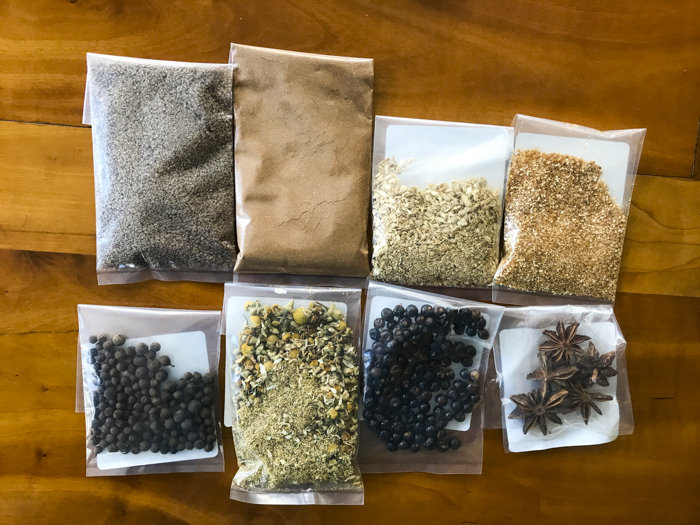



Rub for Rind
The one thing that makes this cheese most unique is the liquor made from the local herbs and roots, and the yeast from the local wines. This is all incorporated into a liquid that is rubbed on the surface frequently during aging. This eventually permeates the cheese, leaving a wonderful aroma and flavor unique to the cheese.
As I have already mentioned, the exact mix for this is top secret and locked up, the formula only known to a select few.
However, this should not deter us and our imagination. I have made my own combination with a selection of flavor/ aroma components, plus the yeast muck from my recently fermented ciders, which is quite aromatic on its own.
The first thing was to select the herbs/spices/woody components. Where to begin?
I did a bit of research on the web as to what grows in the mountains, as well as on some of the mountain bitter concoctions available commercially.
Now I tend NOT to keep things secret, so here is what I used to make the liquor for the rub (the units are grams):
- Rosemary - 1 gm
- Sage - 1 gm
- Tarragon - 1gm
- Clove - 1 gm
- FiveSpice - 2 gm
- Juniper Berries - 1.5 gm
- Camomile - 2 gm
- Ginger - 2gm
- Star Anise - 1 gm
- Bitter Orange Peel - 2 gm
I infused this into about 4 oz. neutral alcohol for 1 week, then strained the liquor.
I then mixed with an equal amount of my yeast mud (often called lees) from a cider I recently made.
Store this in the fridge in a sealed bottle until ready to use. Those that have tasted the infusion say that it smells a lot like the JagerMeister.
By no means am I saying this is the mix they use, but it works well enough for me and my friends that taste the cheese.
Appenzeller Cheese Making Recipe Info
Origins & Tradition
What Makes It Unique
Make It Yourself
Why It's Rare
Cheese Making Supplies
Related Products
You May Also Like
Related Recipes
From The Blog
















